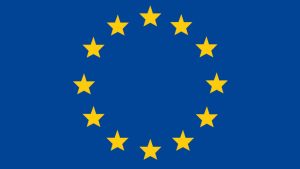Ireland has long been a quantum research powerhouse, but now, with new legislation, they are setting the stage for a further revolution in the journey to Quantum 2.0.
In November 2023, the Irish government’s Department of Further and Higher Education, Research, Innovation and Science released Quantum 2030: A National Quantum Technologies Strategy for Ireland, Putting Ireland in a Quantum Super Position. This document outlines Ireland’s quantum strategy and plans to become an internationally competitive hub for quantum technology and advancement by 2030.
Quantum has various potential applications in the medical, internet, security, finance, and other sectors. Because of this, many countries are throwing their hats into the ring to increase their quantum research, and both government and private investments fund the immense work that goes into this endeavour. Quantum 2030 is Ireland’s first official strategy to address quantum technologies.
This does not mean, however, that Ireland has had nothing to do with quantum until now. Indeed, Ireland has developed a multitude of quantum assets, talents, and support frameworks, including university courses and research centres such as C-QuEST at University College Dublin and Tyndall National Institute at University College Cork, as well as government funds such as the Disruptive Technology Innovation Fund, the National Advisory Forum for Quantum Technology, and the continued presence of large technology and quantum technology firms that are investing heavily in quantum.
Ireland is no stranger to quantum, and Quantum 2030 will only enhance that as it emphasises mechanisms for growing quantum talent. The quantum technology strategy can build on the expertise of two leading Science Foundation Ireland (SFI) Research Centres: IPIC Bringing Photonics to Life, led by Tyndall National Institute, and CONNECT for Future Networks and Communications, led by Trinity College Dublin. Combining photonics with optical communications and networking expertise, whilst challenging, will result in unique advantages for developing innovative quantum technologies and solutions in Ireland. All of this, combined with local and international industry collaboration, will ensure that Ireland has an ecosystem of quantum development that will drive innovation.
The five pillars of Quantum 2030
Quantum 2030 focuses on five pillars of quantum technology, with the first four being vital individual aspects of quantum development and the fifth enveloping the other four. These pillars are:
- Excellent fundamental and applied quantum research;
- Top science and engineering talent;
- National and international collaboration;
- Innovation, entrepreneurship, and economic competitiveness; and
- Building awareness of quantum technologies and real-world benefits.
Pillar one: Excellent fundamental and applied quantum research
This pillar consists of heavily investing in new research in quantum computing technology. This will act as the core of the Quantum 2030 plan, as new and existing research projects receive funding to ensure that results are achieved, driving Ireland’s quantum value further.
Pillar two: Top science and engineering talent
Of course, to continue the development of quantum research, there needs to be the talent to fulfil those needs. While Ireland is already host to many excellent minds, both grassroots and from across the seas, Quantum 2030 will see further growth in these numbers and enhance inclusion, diversity, and equality in Ireland’s quantum field.
Pillar three: National and international collaboration
While Ireland’s strategy primarily concerns itself, there is much to be gained from looking globally. As such, Ireland will work more tightly knit as a country and work more closely with various other countries regarding investment and fostering talent.
Pillar four: Innovation, entrepreneurship, and economic competitiveness
This pillar seeks to bring together academics and enterprises to work more closely, to innovate and stimulate both research and economic opportunities from said opportunities. This will work across Ireland and in international collaborations.
Pillar five: Building awareness of quantum technologies and real-world benefits
Moreover, bringing quantum technology to more light within society. This will lead to further interest in quantum and ensure that the future of quantum research has the best possible chance of remaining healthy and increasing academic and economic strength.

Quantum technology in Ireland
There are many facets of quantum technology; in Ireland in particular, there is a great strength in quantum computing and communication. Quantum computing offers distinct advantages over traditional computing in certain aspects, as it can calculate many more outcomes much quicker than conventional computing. This is due to the quantum state of their codes. While traditional computing can only work through a calculation as a series of 1s and 0s, quantum can do this, as well as have each number be a 1 and a 0 simultaneously, known as a superposition. This will allow quantum computers to solve specific problems much faster and on a greater scale, offering obvious benefits in weather predictions, healthcare, AI, and finance.
Quantum communication concerns the security of the data being transferred and ultimately developing a quantum internet. This will bring quantum encryption, data assets, and enhanced defences against cyber-attacks. This has obvious advantages in data security, which itself affects many fields, from finance to research, security, and personal applications.
There is also quantum sensing, the current best possible method of sensing various things, such as time, gravity, position, or magnetic fields. This technology’s development will benefit medical technology, atmospheric monitoring, and GPS systems, among other aspects.
Due to Ireland’s already well-developed quantum industry and knowledge base, the tools to continue developing are already present. Ireland is set to become a cornerstone in the international quantum industry.
IrelandQCI
As a part of the European Commission’s EuroQCI programme, the IrelandQCI (Ireland Quantum Communication Infrastructure) project is underway to build a national quantum communication infrastructure for Ireland. Using both Irish governmental funding from the Department of the Environment, Climate and Communications and EU funding (under the Digital Europe Programme), the €10m project seeks to upgrade conventional communications by integrating innovative and secure quantum devices and systems into traditional communication infrastructures.
The project will demonstrate quantum communications over ESB Telecoms and HEAnet’s communication networks by integrating innovative quantum technologies with classical networks. The knowledge gained from these demonstrations will be shared and ultimately help advance the country’s overall telecommunications sector and information security. There are several partners that are making this project a reality, led by Walton Institute at South East Technological University (SETU) in Waterford, the consortium includes Trinity College Dublin, University College Cork’s Tyndall National Institute, University College Dublin, Maynooth University, and the Irish Centre for High End Computing at University of Galway, all of which are members of CONNECT. HEAnet and ESB Telecoms are also key partners in the project, as the quantum communications network is being built across the dark fibre optic network of ESB Telecoms parallel to the existing HEAnet backbone between Dublin, Waterford, and Cork.
IrelandQCI is establishing an infrastructure for Quantum Key Distribution (QKD), a method of communication based on sharing encryption keys using quantum physics to boost security. QKDs will be distributed over the existing classical network, creating a quantum communication network which will significantly increase information security in Ireland.

IrelandQCI Consortium of Partners
Of leading the IrelandQCI project, the Director of Research at Walton Institute, SETU, Dr Deirdre Kilbane, said: ‘’Using the laws of quantum physics, we are creating a secure communication infrastructure that will benefit not only industry, academia and government, but wider Irish society. There are huge benefits to quantum networking in Ireland, for sectors such as healthcare, finance, and energy, all of which rely on knowing their data is secure. We are very proud to lead this ground-breaking project at Walton Institute at SETU, where our researchers are making a significant contribution to the growth and awareness of quantum technologies, positioning Ireland for future investment opportunities and collaboration on an international scale.’’
Director of CONNECT, TCD, Professor Dan Kilper said: “By experimenting on the transmission of quantum signals on a public network between Dublin and Cork, IrelandQCI is laying the groundwork so that Ireland will be ready for the quantum Internet.”
Managing Director of ESB Telecoms, Mr John Regan, said: “In the ever-evolving telecommunication landscape, the emergence of quantum technology marks a pivotal evolutionary moment. As part of the IrelandQCI consortium, ESB Telecoms is proud to be at the forefront of this revolution. Our expertise in delivering high availability, low latency networks, positions us as a key player in building the quantum future. Leveraging our robust fibre infrastructure, we are poised to lead the charge in providing quantum-ready networks, ensuring resilient infrastructure for tomorrow’s demands. This collaboration reflects our unwavering commitment to innovation and our relentless pursuit of excellence in service delivery. It resonates with our vision of ‘The Future. Connected’, where connectivity is seamless, secure, and drives positive societal change through innovation and growth.”
Director of PIXAPP, IPIC, Tyndall National Institute, Professor Peter O’Brien, said: ‘’At Tyndall National Institute, we are currently installing a state-of-the-art micro-optical 3D printer capable of producing extremely complex optical structures with sub-micron precision. The new 3D printer is manufactured by Vanguard Automation in Germany and is being installed in Tyndall’s photonics packaging and system integration facility. The new equipment will reduce optical power coupling losses in quantum photonic devices and the 3D printed micro-structures are capable of withstanding cryogenic temperatures, delivering the extremely high operating efficiencies required for quantum applications.’’
Innovation and R&D Manager HEAnet, Mr Eoin Kenny, said: ‘’HEAnet takes pride in its role as the network’s operations centre for the IrelandQCI network. By constructing and operating a dedicated quantum communications research infrastructure, we are not only learning how to build and operate such a network but also providing the Irish research and education community with unprecedented access to cutting-edge quantum communications technologies. Our initial demonstrations focus on the exchange of security keys, employing the principles of quantum mechanics to guarantee interference-free communication. Securely transmitting keys across this quantum communications network marks the first stride towards our ultimate ambition – the establishment of a quantum Internet.’’
Many of these partners are a part of other quantum projects, such as Trinity College Dublin’s SFI CoQREATE (Convergent Quantum REsearch Alliance in Telecommunications) project, an international collaboration working towards developing a quantum internet. This sees an alliance between the Republic of Ireland, Northern Ireland, and the US. A quantum internet will provide enhanced interconnectivity between quantum computers, linking them for even greater computational power and laying the foundation for future quantum communications. There is also Tyndall National Institute’s participation in the Quantum Flagship Initiative, via the Quantum Secure Networks Partnership (QSNP), which is dedicated to bringing new quantum technologies to the market. This initiative was established by the European Commission in 2018 with a budget of €1bn and a decade’s duration. Tyndall National Institute’s participation sees work on advanced packaging solutions.
Collectively, these three projects intend to drive development in quantum technologies by combining the efforts of policy makers, academics, research institutes, and more. The goals are to create advanced quantum technology for quantum secure communication networks, to integrate quantum cryptography technology to telecommunication systems at all levels, and to take all the newly developed skills and technology and deliver them to European technology, such as government level systems, raising awareness and educating key stakeholders in the process.
The future is bright for Ireland’s quantum landscape.
For more on the IrelandQCI project visit: www.irelandqci.ie

 This project has received funding from the European Union’s DIGITAL Europe Programme under grant agreement No 101091520
This project has received funding from the European Union’s DIGITAL Europe Programme under grant agreement No 101091520
Please note, this article will also appear in the seventeenth edition of our quarterly publication.









